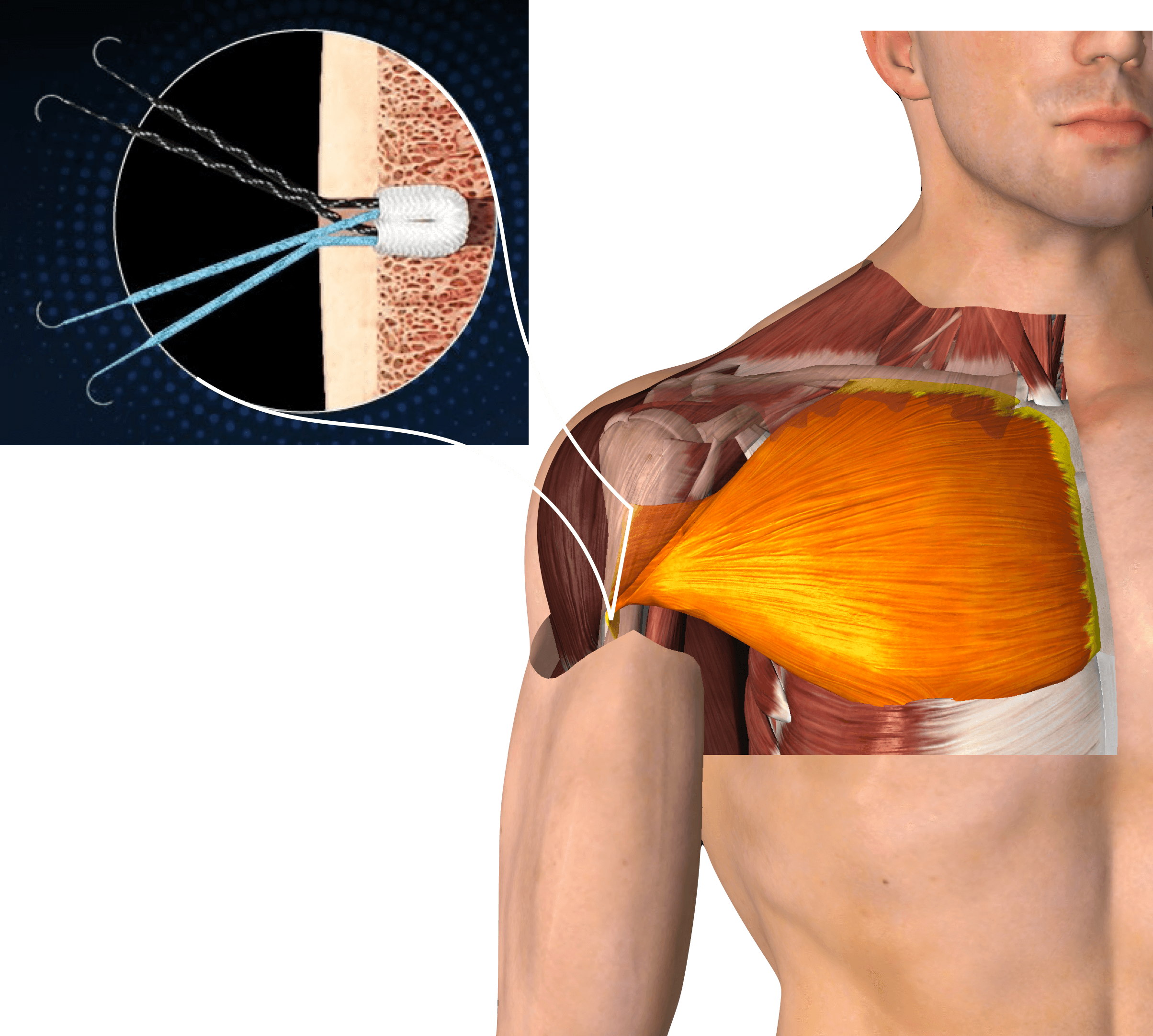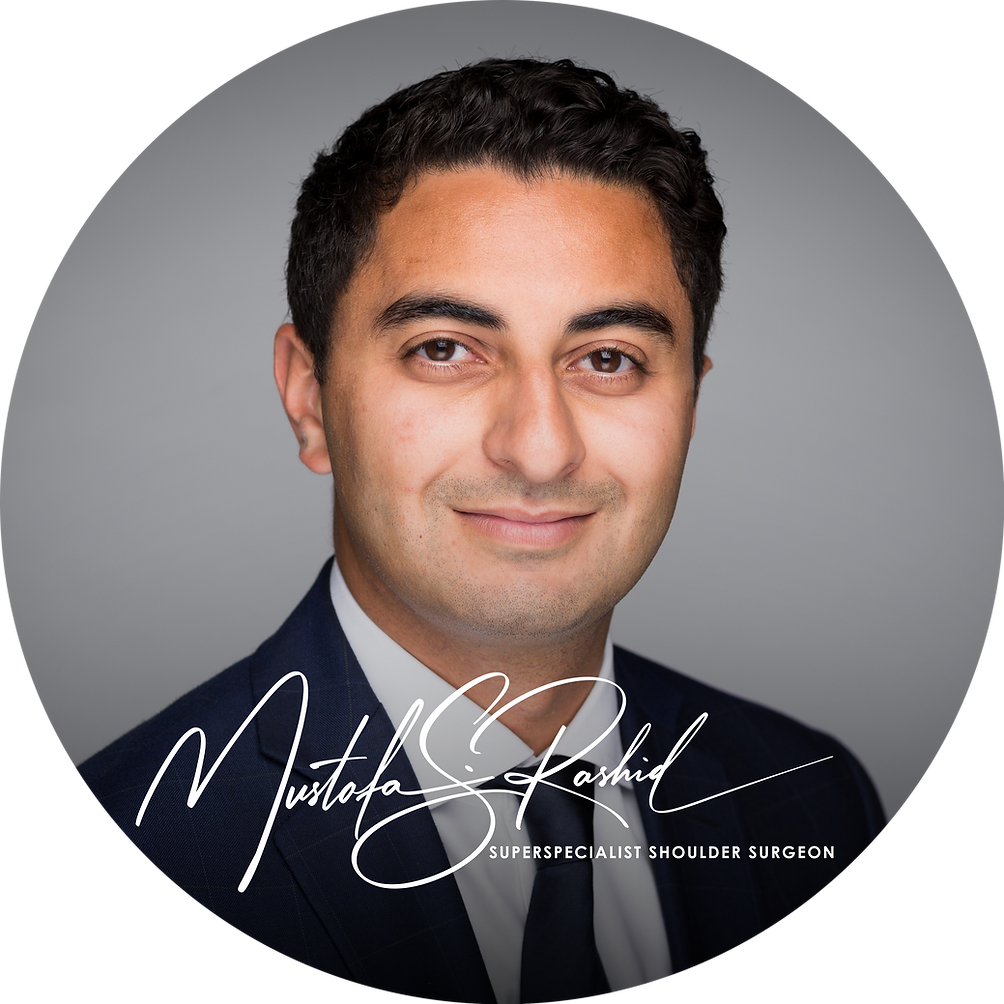Pec Major Repair Surgery

Overview
Pec Major tendon repair surgery is often chosen by patients wishing to minimise the strength deficit that can occur with pec major tendon ruptures. Most patients are male, and have a physically demanding job, or enjoy weightlifting.
Indications for Surgery
Surgery is not necessary for everyone. The pain from the injury often settles without treatment. However, roughly 20-50% of strength, particularly in “pushing” movements, is often perceived in the long term. Hence, some patients may choose to have surgery to repair the tendon. Aching pain and cramping is also occasionally felt by patients. Finally, the pec muscle may look different to the other side, and whilst this is not a good reason for surgery, it can be improved with a successful repair.
Pre-Surgery Tests and Assessment
Before any surgery to repair the pec major tendon, a variety of assessments and tests are performed. In cases where it is not clear that the pec tendon has torn completely, a MRI scan of both sides is occasionally performed. Dr. Rashid will assess your shoulder, the pec major muscle, and determine the extent of the injury carefully.
Procedure Details
Surgery to repair the pec major tendon is best performed soon after the injury. It is performed under general anaesthesia. You will be position lying on your back, sat slightly up, with your arm in a special arm holder. An approximately 8cm incision is made at the front of the shoulder and the two heads of the pec major muscle are identified. Occasionally, the sternal head is the only one that has torn. The torn tendon is then grasped with sutures. The bone bed for attachment is then prepared with a burr. Between 3 and 4 suture anchors are inserted into the humerus bone. Each one has 2-3 pairs of ultrastrong suture tapes. These are then passed into the tendon, securing it firmly to the bone. The incision is closed in layers with absorbable sutures, buried under the skin so they do not need to be removed later. You will be placed into a sling to protect the repair.
Risks and Complications
As with any surgery, there are risks involved, but thankfully they are not common. These risks include pain, scar, and infection. Other risks include recurrent tears, and nerve injury (rare). Some patients may notice the muscle may look different to the other side. Dr. Rashid has carefully trained over many years to perform this operation and can do so safely and effectively.
Recovery and Rehabilitation
Recovery following this type of surgery allows for the tendon to heal, then to slowly regain shoulder motion and strength. Dr. Rashid will provide you and your physiotherapist with a protocol that involves when you can discard your sling (usually after a few weeks), and when to commence certain movements. Physiotherapy is helpful to ensure you regain your motion, function, and strength of the shoulder. Pain relief is often appreciated in the first month. It is important to follow the rehab guidance carefully as early overloading of the repair may cause it to fail. Some long term adaptations to your workouts may be advised to reduce the risk of future re-injury.
Expected Outcomes
Most people will be in a sling for a few weeks and therefore driving is not advised during this time. After that phase, rehabilitation will include phased return to full motion, activity, and strength. Most people can return to work after 2 weeks if they do not have a physically demanding job. Most people can return to manual work and sports between 3 and 6 months after surgery. The success rates of this surgery are typically greater than 90%. Most people can return to their usual active lifestyle, but some may notice a slight reduction (approximately 90% of normal) in strength in certain pushing movements, compared to before their injury.
About the Author

Mustafa Rashid
Dr. Mustafa Rashid is an award-winning, well published superspecialised surgeon from the UK, specialising in shoulders
